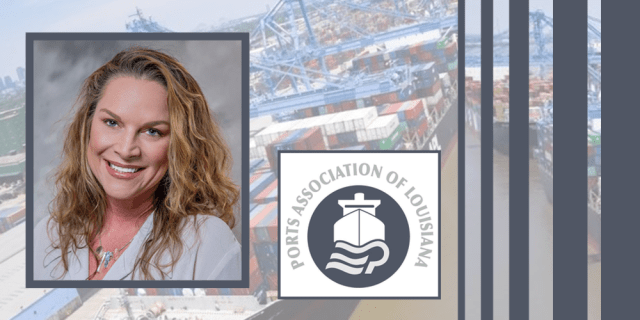Stay ahead of the curve as a political insider with deep policy analysis, daily briefings and policy-shaping tools.
Request a DemoOur History: The boat that won the war

Eighty years ago today, the Allied invasion of Europe began with D-Day, as more than 130,000 troops mounted the largest amphibious invasion in military history, many in boats designed and built in Louisiana.
It was close to 6:30 a.m. when the first LCVPs (Landing Craft, Vehicle and Personnel) came ashore on Utah Beach at Normandy. Andrew Jackson Higgins of New Orleans had filed a patent for “the boat that won the war” on Dec. 8, 1941, the day after the attack on Pearl Harbor.
Born in Nebraska in 1886, Higgins was often in trouble for fighting and would eventually drop out of high school. After a stint in the Nebraska National Guard, he left the state to work in the lumber industry on the Gulf Coast.
Higgins began to create compact shallow-water boats that were effective when removing and transporting heavy logs through swamps and bayous. While improving his designs, Higgins bought a small boatyard in New Orleans and founded Higgins Industries.
Throughout the 1930s, Higgins fought to establish his company’s reputation and convince a skeptical military establishment of the merits of his boat designs. He convinced the U.S. Coast Guard to buy his boats, which drew the attention of the U.S. Marine Corps.
Navy leaders were developing their own designs and were uninterested at first. Higgins visited the Navy’s Bureau of Ships to argue for his designs, scrawling “This boat stinks” on one of the Navy’s blueprints. The Navy eventually came to the same conclusion, and the Navy awarded Higgins’ small, little-known company the contract.
Though the term “Higgins boat” has become a catch-all for ramped landing craft, Higgins actually produced two: the more famous LCVP and the lesser-known Landing Craft Mechanized, sometimes referred to as a tank lighter.
At the height of World War II, Higgins Industries was the largest employer in the New Orleans area. More than 20,000 people worked at seven plants in one of the first modern, racially integrated workplaces in America.
Higgins Boats changed the way that war was fought. Instead of having to attack heavily defended ports, invaders could unload across an open beach and have more options in choosing their attack points, which also stretched the defending armies.
“Andrew Higgins is the man who won the war for us,” Dwight Eisenhower told author Stephen Ambrose in a 1964 interview.
Editor’s note: Sources consulted for this piece include The National World War II Museum, the U.S. Patent and Trademark Office and Smithsonian Magazine.
This piece first ran in the June 6, 2024 edition of LaPolitics Weekly. Wish you could have read it then? Subscribe today!
Know the most important news affecting Louisiana
Get our free weekly newsletter that covers government, policy and politics that impact your everyday life—in 5 minutes or less.
Marusak: Federal regs, underfunding issues hinder Louisiana ports
Louisiana’s port system is the gateway into, and out of, the world. With more than 12,500 miles of waterways, our biggest economic driver – one in five jobs in the state – is at our backdoor. But the underfunding of projects necessary to feed the world, provide energy and keep the supply chain moving has …
Long-awaited DOTD reorganization report completed
LaPolitics/State Affairs has obtained the Boston Consulting Group report about the Louisiana Department of Transportation and Development. Gov. Jeff Landry tapped the Louisiana Coalition to Fix Our Roads, a private industry group, to initiate a planned reorganization effort for the department. The coalition selected BCG, which was expected to deliver the report to legislative leaders …
Our History: Louisiana’s first oil well
The first commercial oil well in Louisiana history was drilled in Evangeline (near Jennings) in September of 1901. Jules Clement, a French-speaking farmer, had noticed bubbles rising from a spot in one of his rice fields when it flooded. Knowing about the recent discovery of the Spindletop oil field in nearby Beaumont, Texas, he decided …
In Case You Missed it in LaPolitics Weekly
Here’s what you may have missed in the latest issue of LaPolitics Weekly, published last week… — TAX PLAN UNVEILED: Gov. Jeff Landry will have to navigate a political minefield to win approval of his proposed overhaul of Louisiana’s taxation system… — INSURANCE ISSUES: While some lawmakers and Commissioner Tim Temple continue to call for …




